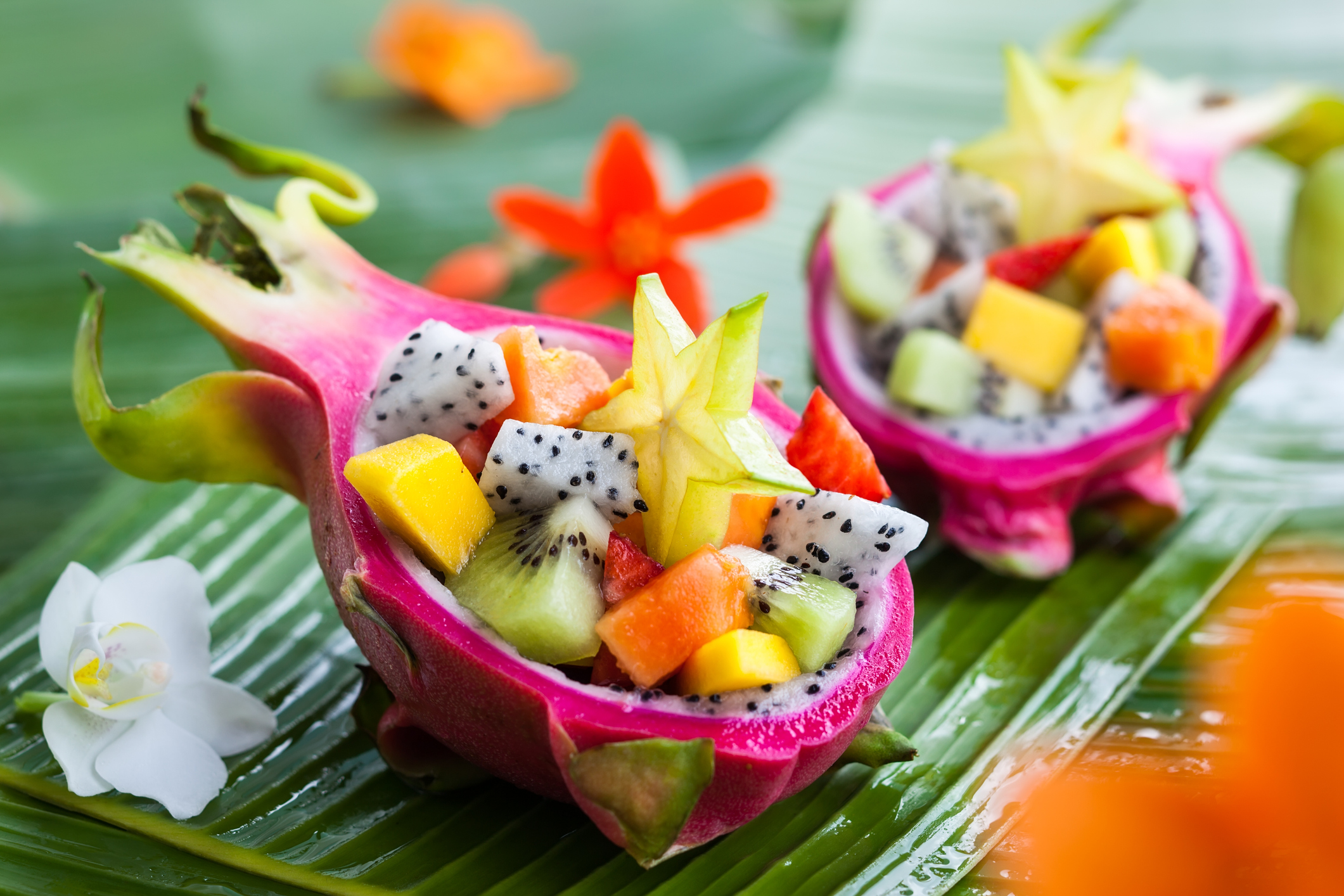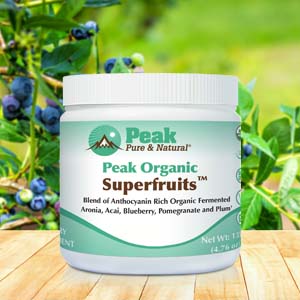Get Easy Health Digest™ in your inbox and don’t miss a thing when you subscribe today. Plus, get the free bonus report, Mother Nature’s Tips, Tricks and Remedies for Cholesterol, Blood Pressure & Blood Sugar as my way of saying welcome to the community!
11 exotic superfruits with supersized nutrition

This time of year, my thoughts turn to warm, exotic locations. It’s my way to escape the winter doldrums. But this year I don’t have any travel plans.
Instead, I’m going to scour my local produce markets for some fruits that come from those places I can’t visit. They might make me feel like I’m in a warmer place.
But that’s not the real reason I’m looking to try some new tropical fruits right now…
I’d like to tell you about 11 exotic fruits that not only come from warm climates, but that are real nutritional superstars.
11 superfruits and how to enjoy them
Star fruit (carambola). With a flavor that mixes citrus, apple, and plum, the waxy yellow star fruit is loaded with fiber and vitamin C.
But as is the case with many otherwise nutritious foods, star fruit can be problematic for people with certain conditions. If you have kidney problems, avoid this fruit. It contains oxalic acid, which forms kidney stones.
Acai. Acai (pronounced ah-sigh-ee) berries are a small, blueberry-sized fruit that is showing up more and more in both supermarkets and health food stores, and with good reason.
Not only do they taste a bit like chocolate, but acai berries have an incredibly high amount of antioxidants (three times the antioxidant power of blueberries!). High levels of antioxidants pummel free radicals, douse inflammation, guard against heart disease and support normal blood sugar levels.
Jackfruit. A jackfruit can weigh up to 100 pounds, making it the world’s largest fruit. It hails from India but has become popular among vegetarians and vegans as a meat replacement in foods like tacos. Its stringy texture is similar to that of spaghetti squash. Jackfruit is rich in vitamin C, B vitamins and potassium.
Dragon fruit (pitaya). The crunchy pink or white flesh of the dragon fruit is full of tiny black seeds and tastes like a kiwi or pear. But don’t eat the scaly skin, which earns it its name. Dragon fruit supplies plenty of fiber, B vitamins and magnesium, and is used to lower cholesterol and promote healthy digestion.
Breadfruit. A great substitute for mashed or fried potatoes, breadfruit is rich in fiber and potassium. It gets its name from the bread-like texture it gets when roasted.
Guava. One guava has more vitamin C than an orange! The taste may remind you of strawberries and pears. It’s easy to use this South American fruit in juices, jams, and desserts. Even the rind is edible!
Guava fruit has a reputation for helping soothe the stomach, intestinal conditions and pain. Anecdotal reports say it helps help with blood sugar, wound healing and blood pressure.
Passion fruit. It looks like a small plum and tastes a lot like guava. It’s rich in potassium and fiber and has just 17.5 calories per fruit. Slice one in half, then scoop out the pulp and enjoy.
Durian. This fruit is most easily found in Asian markets. It has a custard-like flavor, but not such a great smell. It’s rich in iron, vitamin C, folate, and potassium. But watch the calories on this one. It‘s got about 357 calories per cup!
Horned melon (kiwano). A member of the cucumber family, it’s got a green jelly-like interior that is meant to be eaten, seeds and all. It’s got a mild flavor that has been compared to a cucumber or lime with a hint of banana. Great for salads or smoothies, it’s rich in vitamin A and low in calories.
Mangosteen. Here’s a truly exotic fruit — pricey, and hard to find. It comes from the Asian tropics and is rich in antioxidants known as xanthones, which are thought to have anti-inflammatory and anti-cancer properties.
Prickly pear. It’s not really a pear at all, but a cactus native to the Americas. When you see it in the produce section, the prickly parts have often been removed. It tastes like watermelon and is rich in calcium and vitamin C. Prickly pear can be eaten plain or used in jelly, candy, or syrup.
Editor’s note: Did you know that when you take your body from acid to alkaline you can boost your energy, lose weight, soothe digestion, avoid illness and achieve wellness? Click here to discover The Alkaline Secret to Ultimate Vitality and revive your life today!
Sources:
11 Exotic Fruits You Should Try — Web MD
Why You Should Avoid Eating Starfruit — National Kidney Foundation
What are the health benefits of acai berries? — Medical News Today
Guava- Uses, Side Effects, and More — WebMD
How to Eat Passion Fruit: 5 Easy Steps — Healthline













